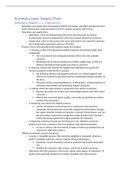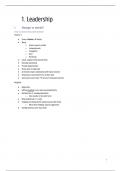Samenvatting
Samenvatting ISE Operations and Supply Chain Management, ISBN: 9781260547627 Supply chain management (30B210-B-6)
- Instelling
- Tilburg University (UVT)
Samenvatting supply chain management, Book: ISE operations and supply chain management.
[Meer zien]














